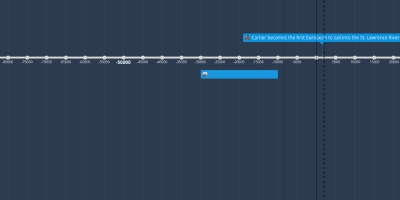sep 11, 2001 - War in Afghanistan
Description:
After the 2001 terror attacks on the United States, Canada joined an international coalition to destroy the al-Qaeda terrorist network and the Taliban regime that sheltered it in Afghanistan. ... The war killed 165 Canadians —158 soldiers and 7 Generals.The U.S. in their 2001 invasion was supported initially by the United Kingdom and Canada and later by a coalition of over 40 countries, including all NATO members. The war's public aims were to dismantle al-Qaeda and to deny it a safe base of operations in Afghanistan by removing the Taliban from power.The War in Afghanistan is the longest war in United States history.Following the September 11 attacks in 2001 on the U.S., which President George W. Bush blamed on Osama bin Laden who was living or hiding in Afghanistan, President Bush demanded that the Taliban hand over Osama bin Laden and expel al-Qaeda; bin Laden had already been wanted by the U.S. since 1998. The Taliban declined to extradite him unless given evidence of his involvement in the September 11 attacks and also declined demands to extradite others on the same grounds. The U.S. dismissed the request for evidence as a delaying tactic,and on October 7, 2001 launched Operation Enduring Freedom with the United Kingdom. The two were later joined by other forces, including the Northern Alliance which had been fighting the Taliban in the ongoing civil war since 1996. In December 2001, the United Nations Security Council established the International Security Assistance Force (ISAF), to assist the Afghan interim authorities with securing Kabul. At the Bonn Conference the same month, Hamid Karzai was selected to head the Afghan Interim Administration, which after a 2002 loya jirga (grand assembly) in Kabul became the Afghan Transitional Administration. In the popular elections of 2004, Karzai was elected president of the country, now named the Islamic Republic of Afghanistan.NATO became involved in ISAF in August 2003, and later that year assumed leadership of it. At this stage, ISAF included troops from 43 countries with NATO members providing the majority of the force.One portion of U.S. forces in Afghanistan operated under NATO command; the rest remained under direct U.S. command.Following defeat in the initial invasion, the Taliban was reorganized by its leader Mullah Omar, and launched an insurgency against the government and ISAF in 2003.Though outgunned and outnumbered, insurgents from the Taliban, Haqqani Network, Hezb-e-Islami Gulbuddin and other groups have waged asymmetric warfare with guerrilla raids and ambushes in the countryside, suicide attacks against urban targets and turncoat killings against coalition forces. The Taliban exploited weaknesses in the Afghan government, which is among the most corrupt in the world, to reassert influence across rural areas of southern and eastern Afghanistan. In the initial years there was little fighting, but from 2006 the Taliban made significant gains and showed an increased willingness to commit atrocities against civilians. ISAF responded in 2006 by increasing troops for counterinsurgency operations to "clear and hold" villages and "nation building" projects to "win hearts and minds". Violence sharply escalated from 2007 to 2009.While ISAF continued to battle the Taliban insurgency, fighting crossed into neighboring North-West Pakistan.Troop numbers began to surge in 2009 continued to increase through 2011 when roughly 140,000 foreign troops operated under ISAF and U.S. command in Afghanistan.Of these 100,000 were from the U.S. On May 1, 2011, United States Navy SEALs killed Osama bin Laden in Abbottabad, Pakistan.In May 2012, NATO leaders endorsed an exit strategy for withdrawing their forces. UN-backed peace talks have since taken place between the Afghan government and the Taliban.In May 2014, the United States announced that its major combat operations would end in December 2014, and that it would leave a residual force in the country.In October 2014, British forces handed over the last bases in Helmand to the Afghan military, officially ending their combat operations in the war.On December 28, 2014, NATO formally ended ISAF combat operations in Afghanistan and officially transferred full security responsibility to the Afghan government. The NATO led Operation Resolute Support was formed the same day as a successor to ISAF.As of May 2017, over 13,000 foreign troops remain in Afghanistan without any formal plans to withdraw.Tens of thousands of people have been killed in the war. Over 4,000 ISAF soldiers and civilian contractors, over 15,000 Afghan national security forces were killed, as well as over 31,000 civilians.Added to timeline:
Date:
sep 11, 2001
Now
~ 23 years ago
